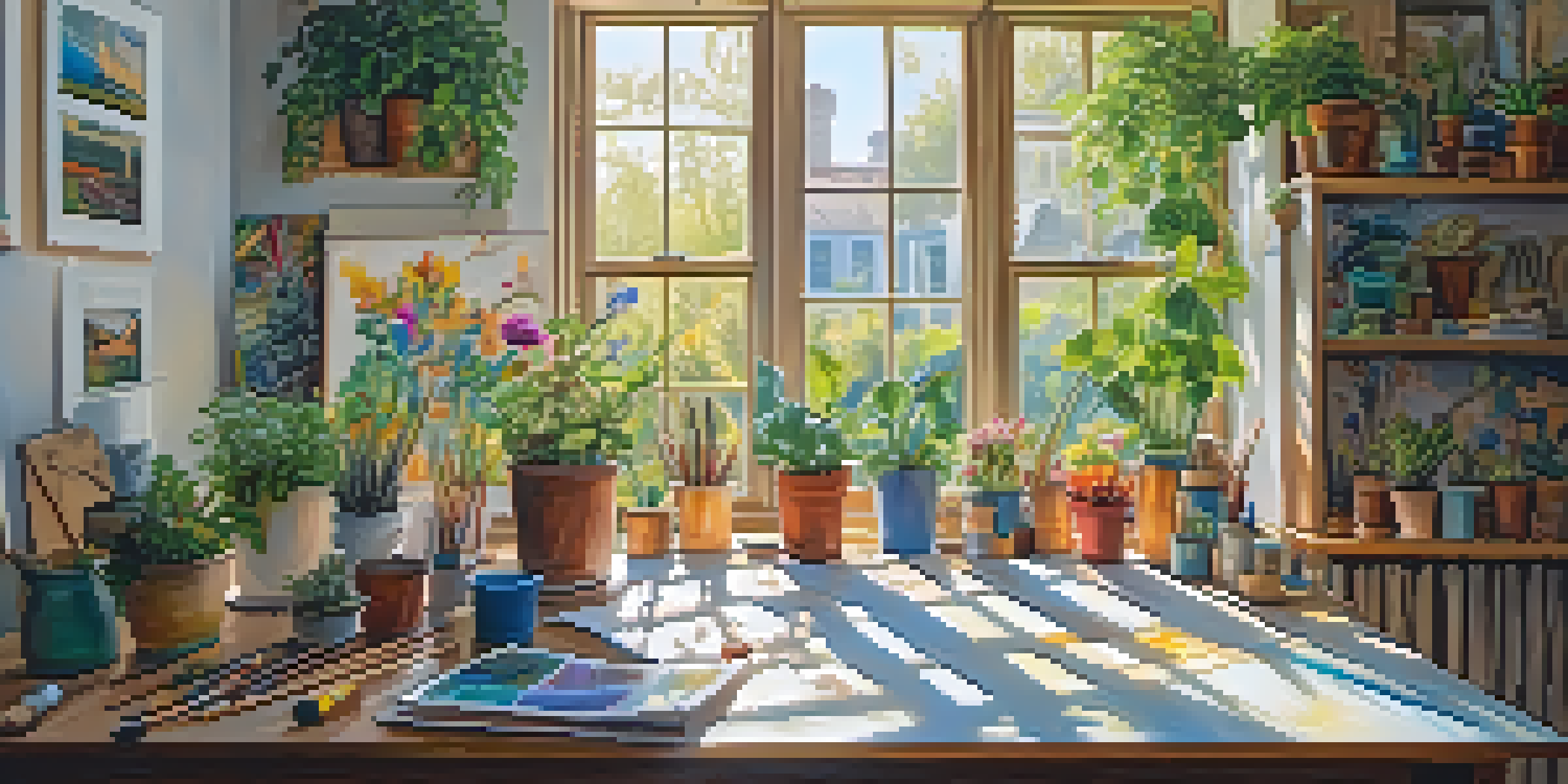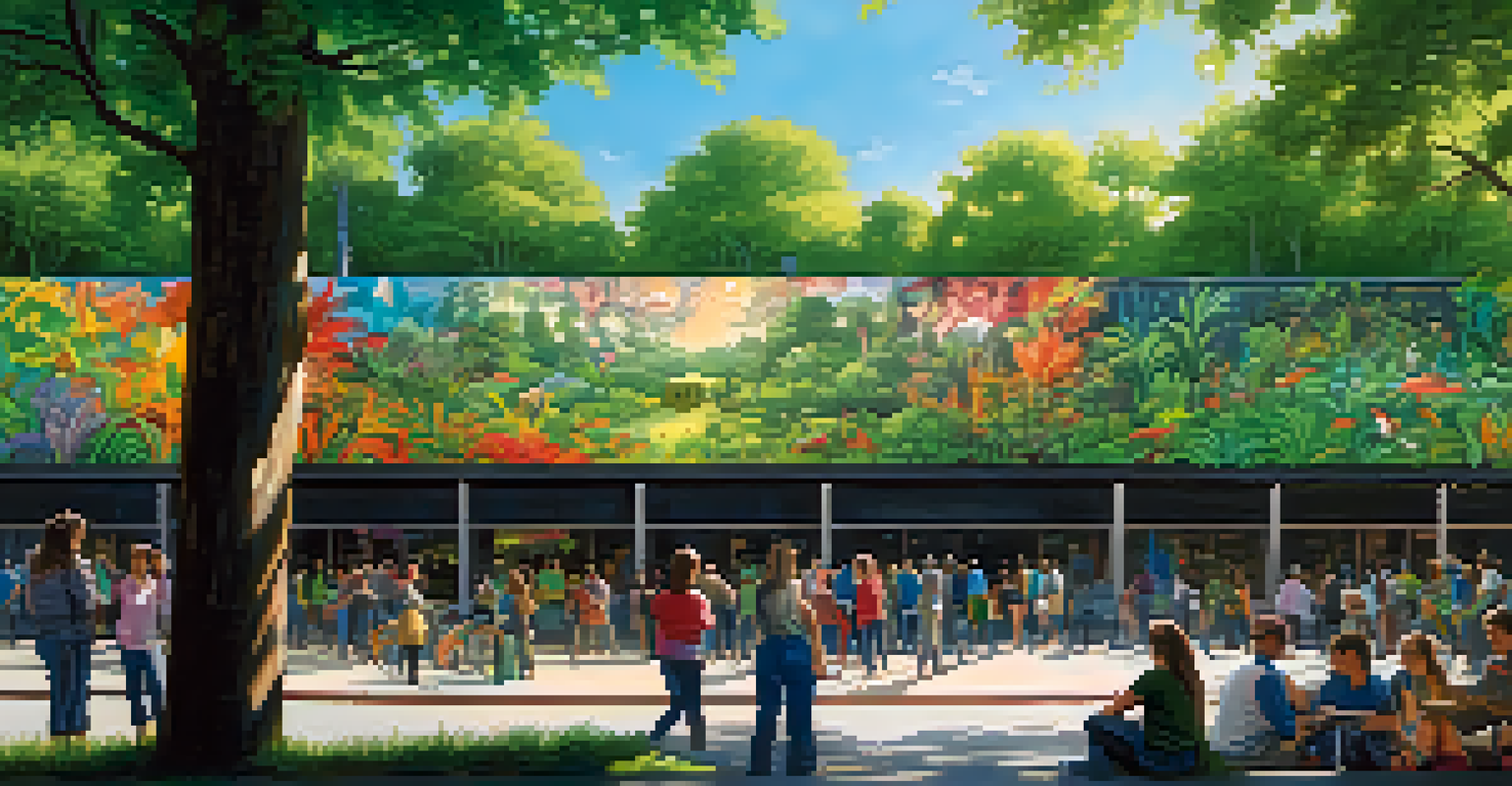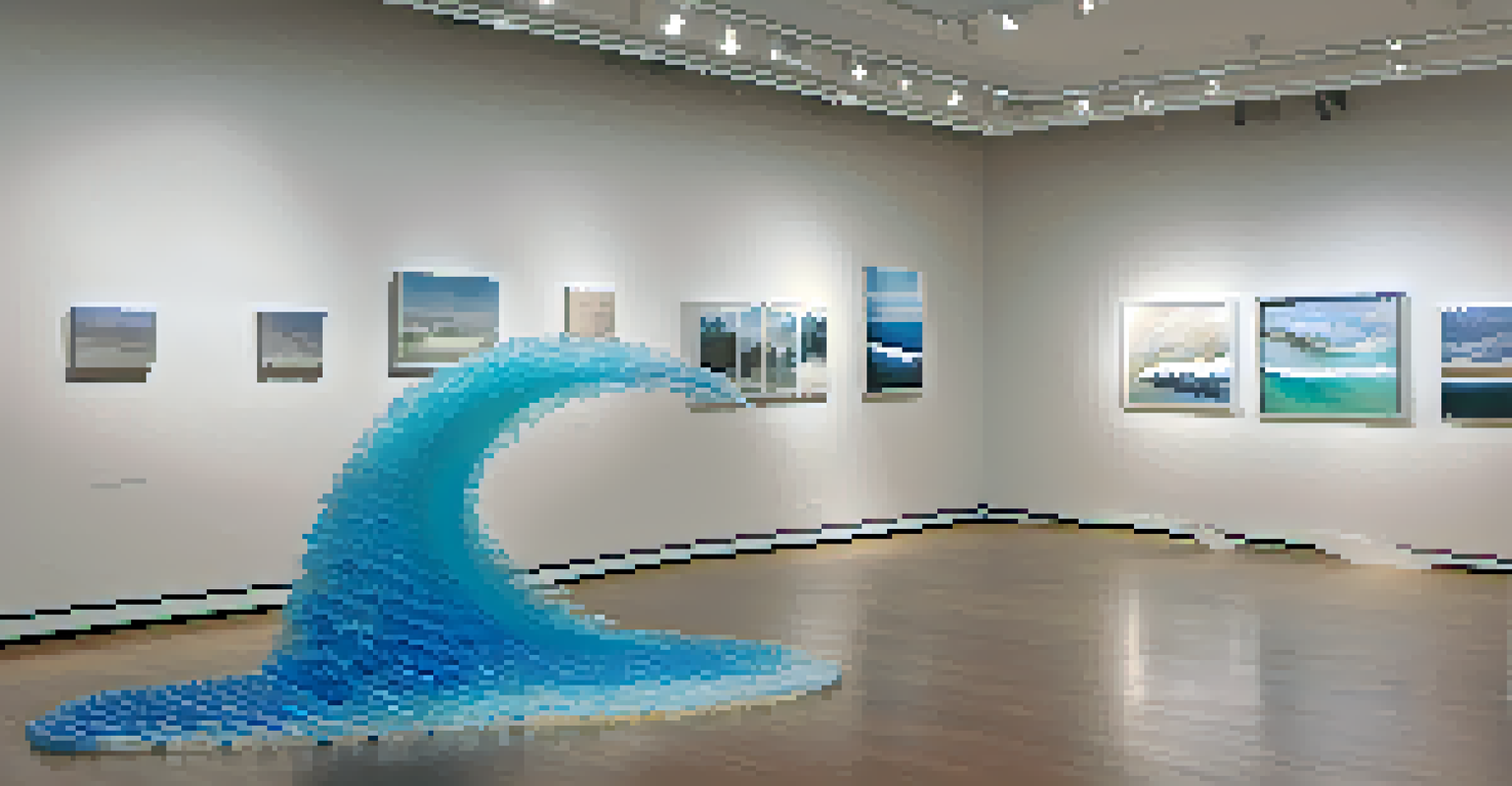The Future of Art: Sustainability as a Core Value

Understanding Sustainability in the Art World
Sustainability in art refers to practices that minimize environmental impact while promoting social responsibility. This means artists are increasingly considering the materials they use and the processes they engage in. Imagine a painter choosing eco-friendly paints or a sculptor sourcing recycled materials. By integrating sustainable practices, artists not only create beautiful work but also advocate for a healthier planet.
Art is a reflection of the world we live in. It should inspire us to take responsibility for the environment.
The push for sustainability in art stems from a growing awareness of climate change and its effects. Artists are now more conscious of their carbon footprints and the lifecycle of their materials. This shift is not just a trend; it's a movement that seeks to redefine what art can be in the context of global challenges. The more artists embrace this mindset, the more they inspire others to follow suit.
Ultimately, understanding sustainability in the art world is about recognizing our collective responsibility. By making conscious choices, artists can contribute to a more sustainable future while enriching their creative expressions. This commitment can lead to innovative approaches that redefine art-making as a practice rooted in care for our planet.
Innovative Materials: The Heart of Sustainable Art
One of the most exciting aspects of sustainable art is the innovative materials artists are using. From biodegradable paints to upcycled textiles, these materials challenge traditional notions of art-making. For instance, a textile artist might use discarded plastic bottles to create stunning fabric, turning waste into something valuable. This not only reduces waste but also sparks conversations about sustainability.

Moreover, many artists are exploring natural materials, such as clay or wood from responsibly managed forests. These choices not only support sustainable practices but also connect the art back to nature. When an artist uses materials that reflect the environment, the artwork becomes a dialogue between the viewer and the planet. It’s a beautiful way to remind us of the resources we often take for granted.
Sustainability Drives Art Innovation
Artists are increasingly adopting eco-friendly practices and materials, transforming traditional art-making into a platform for environmental advocacy.
The innovation in sustainable materials demonstrates that creativity knows no bounds. Artists are proving that you can maintain aesthetic appeal while being environmentally conscious. This blend of beauty and sustainability is becoming a hallmark of contemporary art, inspiring new generations of creators to think outside the box.
The Role of Technology in Sustainable Art Practices
Technology is playing a crucial role in the evolution of sustainable art practices. Digital tools allow artists to experiment without the need for traditional materials, reducing waste significantly. For instance, digital painting eliminates the need for canvases and paints, while 3D printing can create intricate designs using eco-friendly materials. This technological shift opens up a world of possibilities for artists and the environment.
Creativity takes courage, and sustainability takes commitment. Together, they can change the world.
Additionally, technology enables artists to share their sustainable practices with a global audience. Through social media and online platforms, artists can showcase their work and educate others about sustainability. Imagine an artist live-streaming the creation of a piece made from recycled materials, engaging viewers in the process. This not only raises awareness but also creates a community of like-minded individuals.
In essence, technology is not just a tool for artists; it's a catalyst for change. By embracing digital innovations, artists can amplify their messages while minimizing their environmental impact. The fusion of art and technology is paving the way for a more sustainable future.
The Influence of Art Education on Sustainability
Art education is increasingly incorporating sustainability as a core value, shaping the next generation of artists. Schools and institutions are introducing curricula that emphasize eco-friendly practices and the importance of materials. Imagine students learning how to create art with a conscience, understanding the impact of their choices. This foundational knowledge sets the stage for more responsible art-making in the future.
Moreover, workshops and seminars focusing on sustainable practices are becoming more common within art programs. These initiatives provide aspiring artists with hands-on experience in using recycled materials and environmentally friendly techniques. It's about instilling a mindset that prioritizes sustainability alongside creativity. When artists are educated about these practices, they are more likely to implement them in their work.
Technology Enhances Sustainable Art
Digital tools and platforms enable artists to create with less waste and engage a global audience in sustainability discussions.
As art education evolves, sustainability will likely become a non-negotiable aspect of the curriculum. By fostering a sense of environmental responsibility, educational institutions are equipping artists with the tools they need to make a positive impact. This shift not only enhances artistic expression but also promotes a culture of sustainability within the arts.
Community Engagement: Art as a Tool for Change
Art has always been a powerful medium for social change, and sustainability is no exception. Many artists are using their work to raise awareness about environmental issues and inspire action within their communities. For example, muralists might create large-scale works that highlight the importance of preserving nature, sparking conversations among viewers. This community engagement is vital for fostering a culture of sustainability.
Moreover, collaborative projects that involve local communities are becoming increasingly popular. Artists are partnering with environmental organizations to create installations that educate the public about sustainability practices. These initiatives not only beautify neighborhoods but also empower residents to take part in preserving their surroundings. When art and community come together, the impact can be profound.
Ultimately, art serves as a bridge between individuals and environmental consciousness. By engaging communities in sustainable art projects, artists can foster a sense of collective responsibility. This collaborative spirit not only enriches the art experience but also drives meaningful change.
The Market for Sustainable Art: Trends and Opportunities
As sustainability becomes a core value in the art world, the market for sustainable art is expanding. Collectors and buyers are increasingly seeking pieces that reflect their values, leading to a rise in demand for eco-friendly artwork. This shift presents a significant opportunity for artists who prioritize sustainability in their practice. Imagine walking into an art gallery where every piece tells a story of environmental responsibility and creativity.
Moreover, art fairs and exhibitions are beginning to feature sustainable artists prominently. These platforms provide exposure for creators committed to eco-friendly practices, allowing them to connect with a like-minded audience. As consumers become more conscious of their purchases, artists who embrace sustainability are likely to enjoy greater visibility and support. It's a win-win situation for both artists and art lovers.
Community Engagement Fuels Change
Art serves as a powerful medium for raising awareness and fostering collective environmental responsibility through community involvement.
The growing market for sustainable art signals a broader cultural shift toward environmental awareness. As more artists adopt sustainable practices, we can expect to see innovative artworks that not only captivate but also inspire change. This trend is paving the way for a new era in the art world, where sustainability and creativity coexist harmoniously.
The Future: Art and Environmental Responsibility
Looking ahead, the future of art is inextricably linked to environmental responsibility. Artists are increasingly recognizing their role as stewards of the planet, using their creative voices to advocate for sustainability. This commitment to responsible practices is setting a new standard in the art world, one that prioritizes the health of our planet above all else. Imagine a future where every piece of art contributes to a greener world.
As sustainability becomes a cultural norm, we can expect to see a diverse range of artistic expressions that reflect this ethos. From installations that utilize renewable resources to performances that address climate issues, the possibilities are endless. Artists will continue to innovate, finding ways to merge their creativity with environmental consciousness. This evolution will not only enrich the art scene but also promote a deeper connection between art and nature.

In conclusion, the future of art is bright and full of potential when sustainability is at its core. By embracing environmentally friendly practices, artists can inspire change and cultivate a more sustainable world. As we move forward, let’s celebrate and support the artists who are leading the charge toward a more responsible and beautiful future.